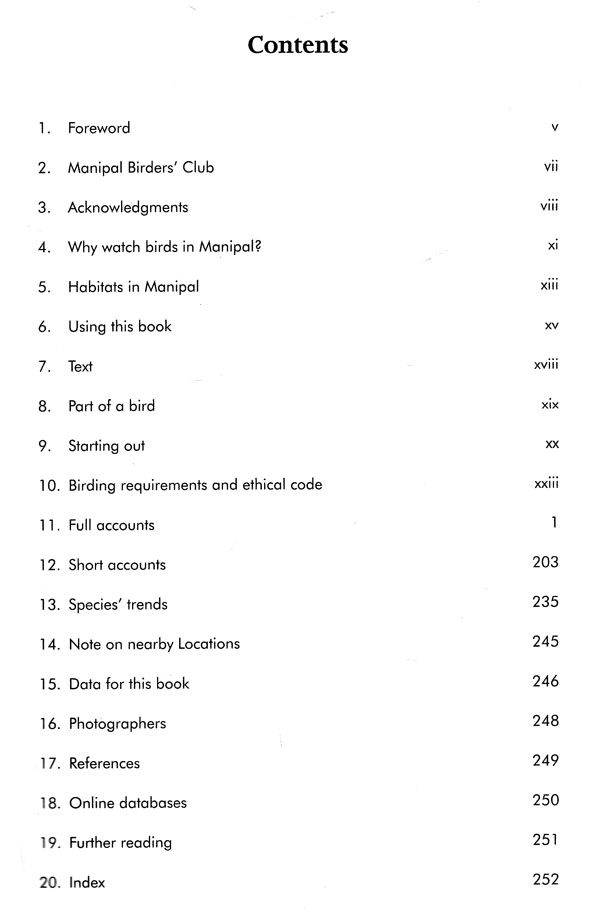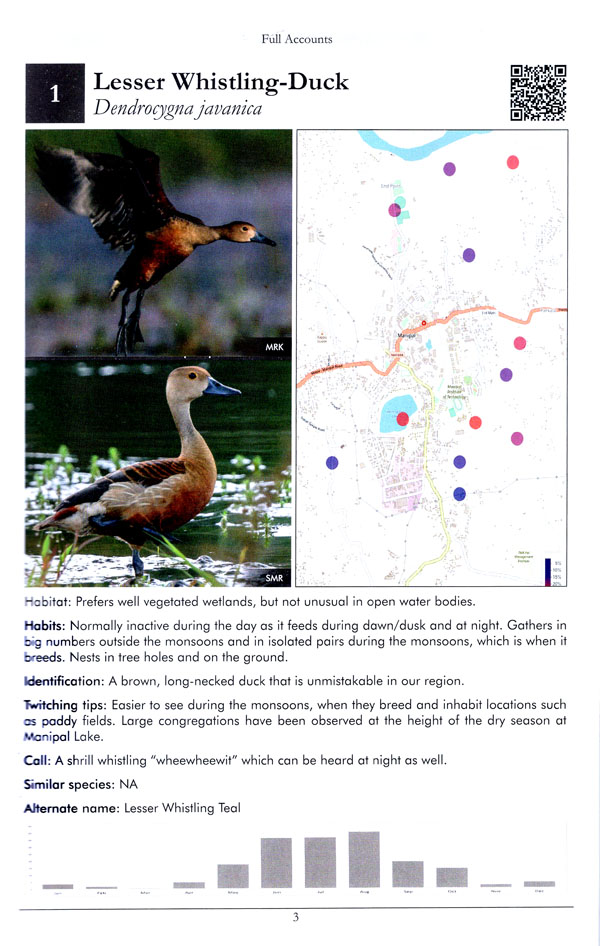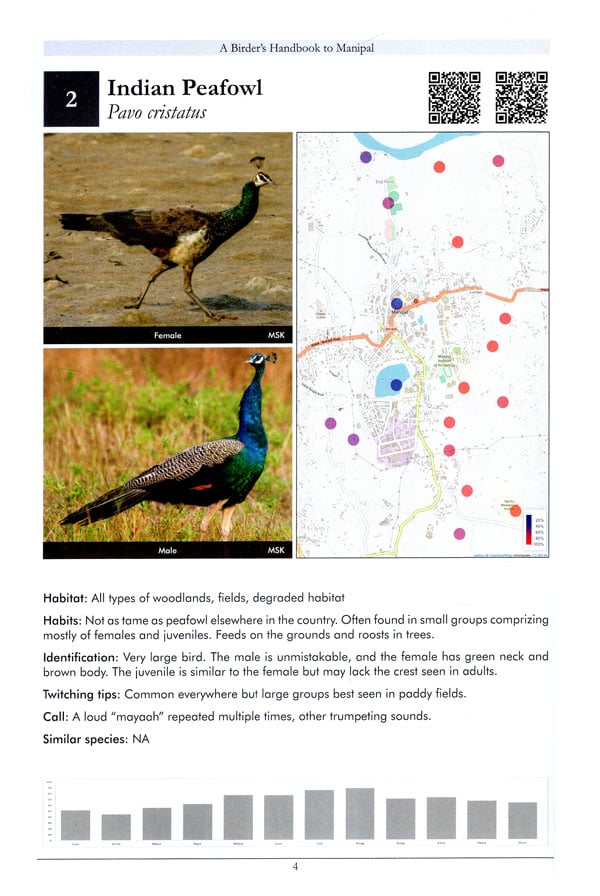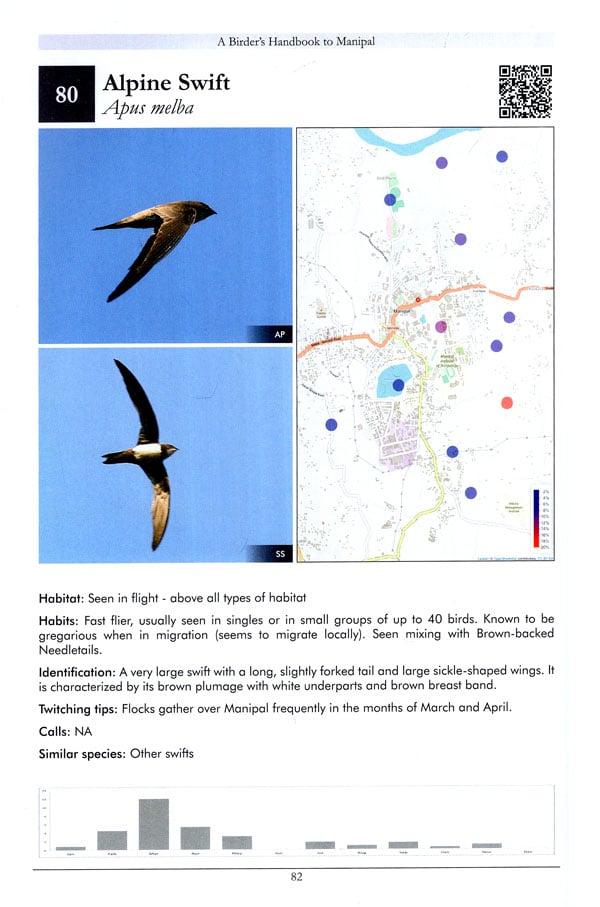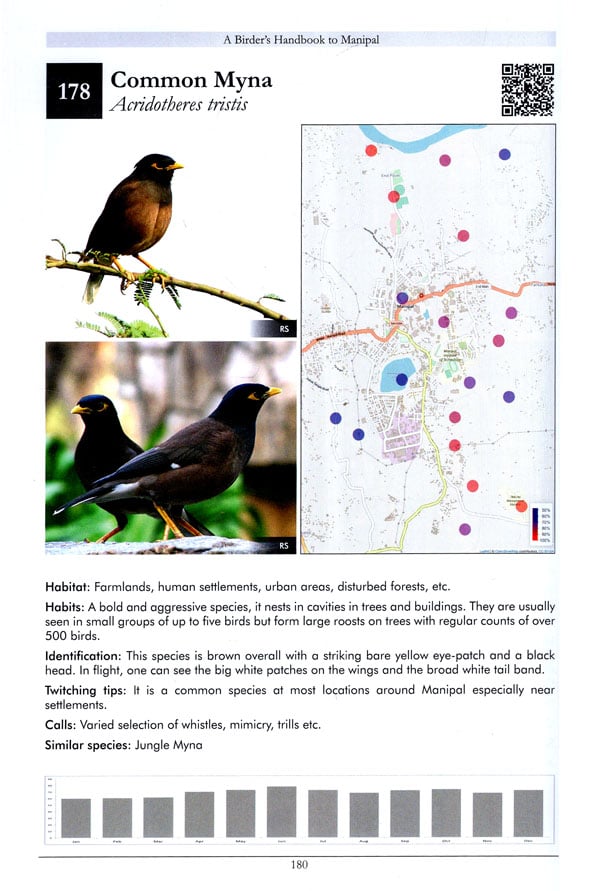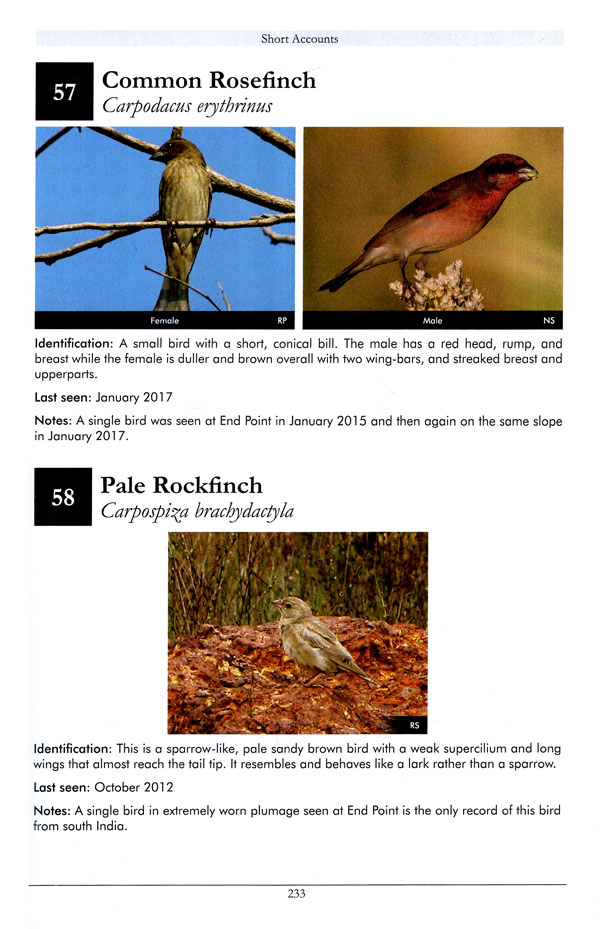
A Birder's Handbook to Manipal
Book Specification
| Item Code: | NAZ597 |
| Author: | Ramit Singal |
| Publisher: | Manipal Universal Press |
| Language: | English |
| Edition: | 2019 |
| ISBN: | 9789382460909 |
| Pages: | 256 (Throughout Colored Illustrations with a Template) |
| Cover: | PAPERBACK |
| Other Details | 10.00 X 7.00 inch |
| Weight | 700 gm |
Book Description
The third edition of A birder's Handbook to Manipal documents 260 species of birds observed in Manipal since 2009. It is more concise and informative than the previous edition, covers more concise and has up-to-date maps and documentation notes. This edition also comes with a waterproof quick ID guide for easy use in the field, as well as bird sound.
Ramit Singal is a former student of mainpal institute od technology. He founded the Manipal Birder's club and authored the first and second editions of this book. In the past, he has been associated with centre for wildlife studies and Nature Conservation Foundation as well as a number of short-term projects across the country. He enjoys spreading the lover for birds amongst other and has been working with bird-related citizen science projects over the past few years.
It has been over five years since the 1st edition of A Birder's Handbook to maipal was released. From that time, the community of birders has grown from a handful of individuals to a large enity. This group is involved in collecting data about birds, introducing new birders to the hobby, honging the skills of birders who are already there, and exploring and conserving the hobitats that are unique to this wonderful little town.
Manipal, despite its density and the plethora of experiences it has to offer, is a small town in size. And it remains astonishing that a place as small as itself harbour such a rich diversity of birdlife. The town has been blessed with a favourable climate and a cornucopia of habitat types- ranging from dense and wet woodlands with thick undergrowth to open, dry expanses of laterific scrub and grassland. These wild habitats are home to some rare and unique wildlife, which continues to persevere through the anslaught of "development" and roads have replaced entire groves and green spaces, and the habitats for birds and their observers become restricted as they diminish with time.
However, it is not just the wild habitats that the residents of Manipal risk losing, it is also the habitats that have been created by man. When I first arrived in Manipal, it was a joy to see small homes with gardens and yards teeming with native trees and vegetation, tree-lined roads and paths, and paddy fields and sacred groves maintained by the people who lived near them. Today, the growing population has forced homes to become apartment complexes that do nnot support gardens and green spaces, small parks and lawns have given way to buildings, the roads have been windened- taking away the trees and bushes that lined them, the sacred groves are smaller, and the paddy fields under threat of conversion to further the concreitization of the region. with all this, not only have the birds gone so have the connections that people forged with the wildlife in their backyards.
While it was once common to find the company of birds, wild mammals, snakes and frogs; it is no longer as simple. It is now easier to find snakes and frogs flattened on the road by traffic than it is to find a live one. Birdlife is not as diverse- with the more generalist species replacing native and specialist species that occured before. Species that thrive in wilder forest hobitats are being replaced by species from elsewhere that prefer open and drier areas. The howls of jackals at night, once a daily feature of the landscape, have been replaced by the sound of traffic. All is not lost. manipal still has enough to support all of these creatures, even if in smaller number than before. However, action must be taken swiftly to prevent losing what is left. We must endeavour to raise awareness about the rich naturalwealth that resides in manipal. We must do our best to protect and nature what remains of the unique natural habitats of this region. This should be done by using the immense poo; of knowledge and creativity that resides in the town to bring forth solutions and ideas to preserve what is left while accommodating the needs of those who call this town home.
I hope this book, which has come about as a result of a numkber of people pooling their observations together, is a step forword to document the changes in the diversity that have been witnessed in the past years. In doing so, it also serves as a fairly accurate measure of the state of our birds up until the end of 2018-a standard that we should hope to maintain over the years to come.
I wish that the many generations of people who will visit or reside in manipal in the future will be able to cherish the vibrant birdlife of town as we do today.
Book's Contents and Sample Pages
